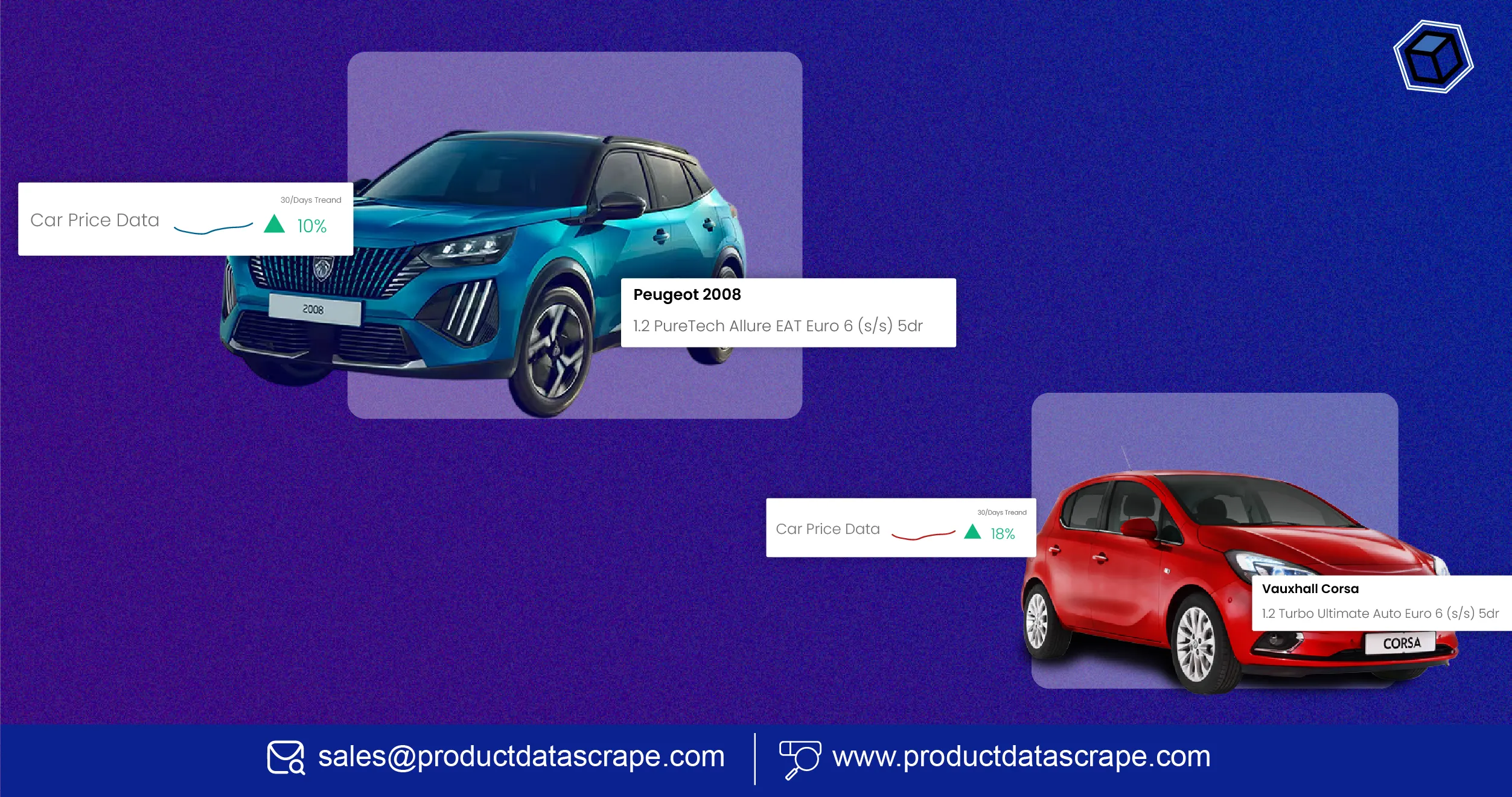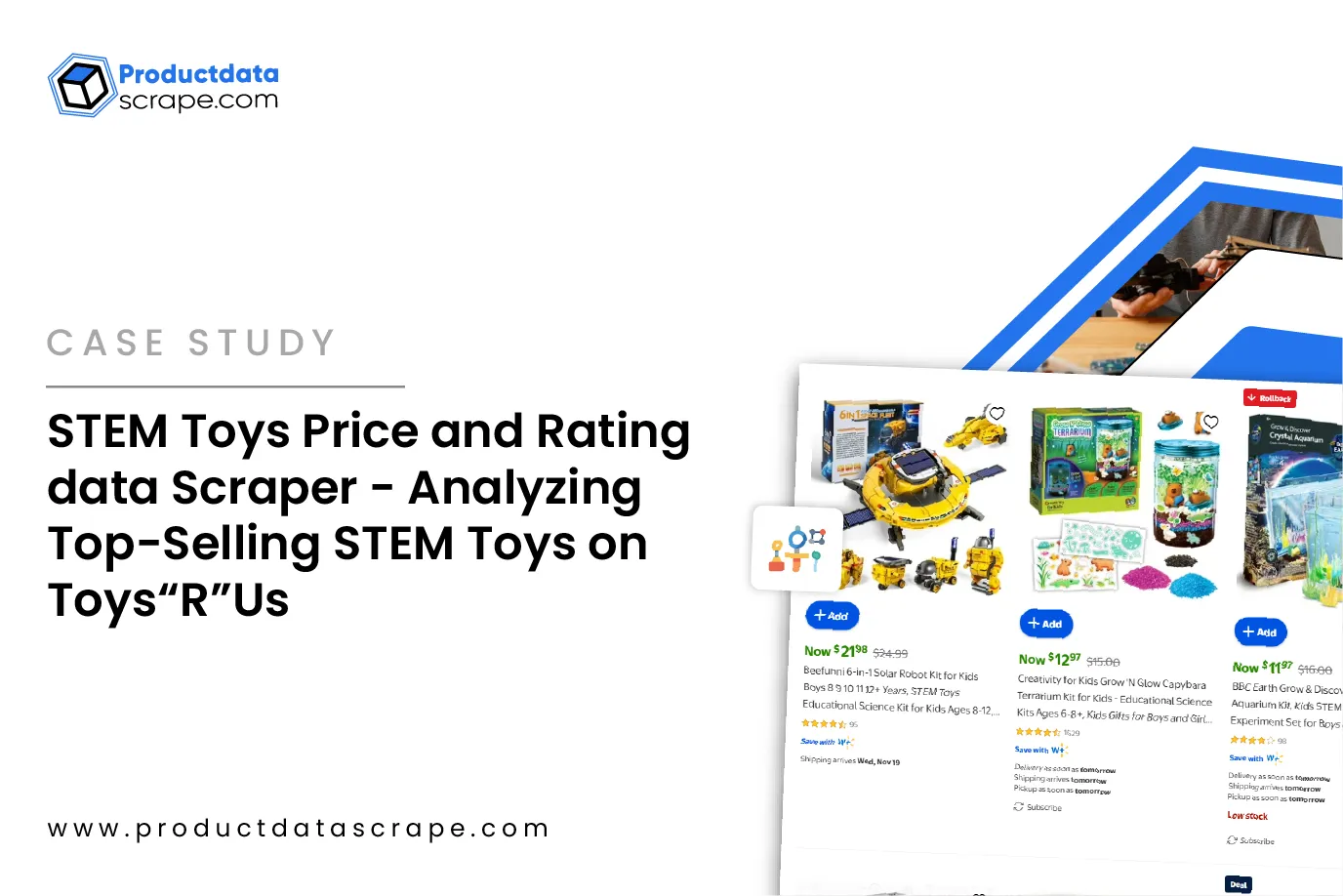
Introduction
In today’s fast-moving automotive market, pricing is one of the most critical factors for used
car dealers and marketplaces. Real-time insights into pricing trends, competitor listings, and
market dynamics allow businesses to make data-driven decisions and maintain competitiveness.
With Scrape Real-Time Used Car Price data, companies can monitor thousands of vehicles across
multiple platforms in real time, tracking price fluctuations, demand trends, and inventory
availability. This proactive approach enables dealers to optimize pricing strategies, attract
more buyers, and increase sales. By leveraging automated data scraping and analytics, automotive
businesses can convert raw marketplace data into actionable intelligence, ensuring their
offerings are always competitive. The ability to continuously benchmark against competitors also
supports improved profit margins and better customer engagement.
Used Car Marketplace Insights
Understanding market dynamics is essential for pricing strategies. Through Used car marketplace
data extraction, dealerships can monitor listings across top marketplaces to capture pricing,
vehicle age, mileage, and condition. Between 2020 and 2025, the average used car listing price
in Europe grew steadily, with urban SUVs showing a 12% increase due to rising demand. Automated
extraction ensures accuracy and scalability, enabling dealers to make quick, informed decisions.
| Year |
Avg Listing Price (€) |
Avg Price Growth (%) |
Popular Vehicle Type |
| 2020 |
15,200 |
- |
Sedan |
| 2021 |
15,800 |
3.9% |
SUV |
| 2022 |
16,500 |
4.4% |
SUV |
| 2023 |
17,200 |
4.2% |
SUV |
| 2024 |
17,900 |
4.1% |
SUV |
| 2025 |
18,500 |
3.4% |
SUV |
Real-Time Used Car Price Tracking
Real-time monitoring is vital in the competitive used car sector. Real-Time Used Car Price
Monitoring allows
dealers to track fluctuations instantly, ensuring their listings remain competitive. Dealers who
implemented
real-time monitoring between 2020–2025 reported faster inventory turnover and up to 15% higher
sales velocity
compared to those relying on manual tracking. By integrating automated alerts and dashboards,
businesses can
respond instantly to price drops or competitor promotions.
| Year |
Avg Price Change per Month (€) |
Vehicles Monitored |
Avg Inventory Turnover (days) |
| 2020 |
200 |
1,000 |
35 |
| 2021 |
210 |
1,250 |
33 |
| 2022 |
220 |
1,500 |
31 |
| 2023 |
230 |
1,750 |
30 |
| 2024 |
240 |
2,000 |
28 |
| 2025 |
250 |
2,250 |
27 |
Market Trend Analysis
Analyzing long-term trends is essential for strategic planning. Using a Used car market
trend monitoring API, dealerships can track shifts in vehicle popularity, average
pricing, and buyer demand. Between 2020–2025, compact cars saw a 10% price increase while
electric vehicles rose 25%, reflecting growing interest in sustainable mobility. Trend analysis
allows businesses to optimize procurement, predict demand, and align marketing campaigns with
emerging buyer preferences.
| Year |
Compact Cars Avg Price (€) |
EV Avg Price (€) |
Diesel Vehicles Avg Price (€) |
| 2020 |
13,500 |
25,000 |
15,000 |
| 2021 |
14,000 |
26,500 |
15,500 |
| 2022 |
14,400 |
28,000 |
16,000 |
| 2023 |
14,900 |
30,000 |
16,500 |
| 2024 |
15,300 |
31,500 |
17,000 |
| 2025 |
15,800 |
32,500 |
17,500 |
Competitive Pricing Benchmarking
With Price comparison data scraping for used cars, dealerships can benchmark
their listings against competitors. By comparing prices, mileage, and vehicle condition,
businesses can position their inventory strategically. From 2020–2025, automated benchmarking
tools reduced pricing gaps by up to 8% and boosted sales conversion rates. Data-driven
benchmarking enables rapid responses to market movements.
| Year |
Avg Price Gap vs Competitor (€) |
Sales Conversion (%) |
Vehicles Priced Competitively (%) |
| 2020 |
600 |
58 |
65 |
| 2021 |
550 |
60 |
68 |
| 2022 |
500 |
62 |
70 |
| 2023 |
450 |
64 |
72 |
| 2024 |
400 |
66 |
75 |
| 2025 |
350 |
68 |
78 |
Data Extraction & Analytics
Automated platforms Extract Automotive Data from multiple marketplaces, providing a unified
dataset for analysis. Coupled with Web Data Intelligence API and Instant Data Scraper ,
dealerships can monitor large inventories efficiently. Custom datasets through Buy Custom
Dataset Solution enable segmentation by vehicle type, region, and price range. Between
2020–2025, dealerships using integrated extraction and analytics platforms improved inventory
turnover by 12% and optimized promotional campaigns for maximum ROI. Real-time and historical
insights empower teams to make data-driven decisions, anticipate market shifts, and maximize
profitability in a dynamic used car environment.
Why Choose Product Data Scrape?
Scrape Real-Time Used Car Price data allows dealerships to gain instant access to market
insights that were previously unattainable. Automated solutions eliminate manual tracking errors
and reduce the time required for data collection. By monitoring price trends, inventory
availability, and competitor activity continuously, businesses can optimize their listings
dynamically. From predictive trend analysis to benchmarking, the solution provides actionable
intelligence that drives higher sales, better margins, and improved customer satisfaction.
Dealers can focus on strategy rather than manual monitoring, ensuring their business remains
competitive and agile.
Conclusion
The automotive marketplace is evolving rapidly, and dealerships must respond with speed and
precision. By leveraging Scrape Real-Time Used Car Price data, businesses can monitor trends,
benchmark competitors, and optimize inventory in real time. Combined with automated analytics
and custom datasets, this approach ensures informed decision-making, faster inventory turnover,
and improved profitability. Real-time price monitoring is no longer optional — it’s a
competitive necessity. Act now to integrate Scrape Real-Time Used Car Price data into your
dealership strategy and gain a sustainable market advantage.
FAQs
What is real-time price monitoring for used cars?
Real-time price monitoring involves tracking used car listings across marketplaces continuously
to capture price changes, inventory updates, and competitor activity, enabling data-driven
pricing strategies.
How does Scrape Real-Time Used Car Price data help dealers?
It provides instant insights into market pricing, vehicle availability, and competitor trends,
allowing dealers to optimize pricing, adjust inventory, and increase sales efficiently.
Can I track multiple marketplaces simultaneously?
Yes. Product data scraping tools can monitor multiple platforms simultaneously, consolidating
data for accurate analysis and cross-market benchmarking.
How are custom datasets useful?
Custom datasets allow segmentation by vehicle type, region, and price, enabling targeted
analysis and actionable insights tailored to a dealership’s inventory and strategy.
Is historical data available for trend analysis?
Absolutely. Historical datasets from 2020–2025 provide insights into pricing trends, vehicle
demand, and market shifts, helping dealerships make informed future decisions.


.webp)

.webp)










.webp)
-01.webp)

.webp)
.webp)
.webp)